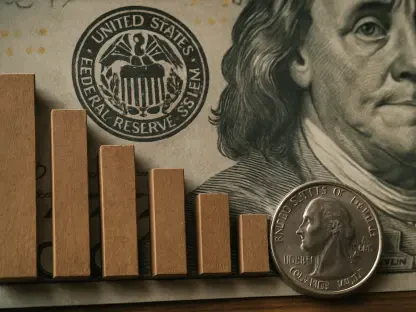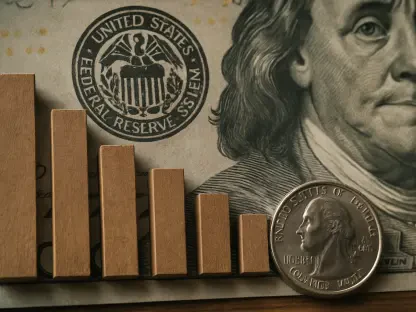In a surprising and bold financial maneuver, MAIA Biotechnology, Inc. (NYSE American: MAIA), a clinical-stage biopharmaceutical company dedicated to advancing cancer immunotherapies, has made headlines with its announcement on October 7 of this year to allocate up to 90% of its liquid assets into a diversified portfolio of cryptocurrencies. This portfolio includes prominent digital assets such as Bitcoin (BTC), Ethereum (ETH), and the stablecoin USD Coin (USDC). Such a significant shift away from traditional treasury strategies within the biotech sector is not only a departure from the norm but also a powerful signal of the increasing integration of digital currencies into corporate finance. This decision places MAIA at the forefront of a transformative trend, potentially reshaping how industries outside of tech and finance perceive and utilize cryptocurrencies. The move has sparked intense interest and debate, positioning the company as a possible trailblazer in merging biotech innovation with cutting-edge financial strategies. As this development unfolds, it raises critical questions about the future of corporate treasury management and the broader acceptance of digital assets across diverse sectors. The implications of this strategy extend beyond immediate market reactions, hinting at a seismic shift in how companies might safeguard and grow their financial reserves in an increasingly digital world.
Pioneering Institutional Adoption
MAIA Biotechnology’s decision to invest heavily in cryptocurrencies underscores a growing trend of institutional adoption, placing it among a select group of forward-thinking companies that have embraced digital assets as integral parts of their financial strategies. This aligns with actions taken by notable firms like MicroStrategy and Tesla, which have previously incorporated Bitcoin and other cryptocurrencies into their balance sheets. However, MAIA’s move stands out due to its origins in the biotech industry, a sector not traditionally associated with such financial innovations. This strategic pivot reflects a broader shift in perception, where digital currencies are no longer viewed solely as high-risk speculative investments but as viable tools for diversification and protection against economic uncertainties like inflation. By allocating such a significant portion of its liquid assets to this space, MAIA is not just adapting to market trends but actively contributing to the redefinition of corporate treasury norms. This approach could serve as a catalyst, encouraging other companies in non-tech sectors to reevaluate their financial strategies and consider the potential benefits of digital asset integration.
Further exploring the significance of this trend, MAIA’s adoption of cryptocurrencies lends substantial credibility to the notion of digital assets as a legitimate asset class. The fact that a biotech firm, focused on life-saving cancer treatments, has taken this step amplifies the narrative of mainstream acceptance. It suggests that cryptocurrencies are transcending their early image as niche or speculative instruments, gaining traction as strategic components of corporate finance across varied industries. This validation could have a domino effect, inspiring other firms in healthcare, manufacturing, or even retail to explore similar paths. The move also highlights the evolving role of cryptocurrencies in providing financial flexibility, especially in times of economic volatility. As regulatory frameworks around digital assets become clearer, the barriers to entry for traditional companies diminish, potentially accelerating the pace of adoption. MAIA’s bold stance thus serves as a beacon for industries hesitant to engage with cryptocurrencies, signaling that the benefits of such strategies might outweigh the perceived risks when approached with careful planning.
Immediate Market Reactions and Implications
The announcement from MAIA Biotechnology triggered an immediate and positive response from the financial markets, with the company’s stock experiencing an 11% surge during premarket trading on October 7. This sharp uptick reflects a wave of investor optimism, suggesting that the market perceives this strategic shift as a progressive and innovative step. It positions MAIA as a pioneer in blending the realms of biotech research with modern financial tactics, potentially setting a new standard for how companies in similar fields manage their treasuries. Investors appear to view this as a sign of adaptability and foresight, recognizing the potential for cryptocurrencies to enhance financial resilience in an unpredictable global economy. The reaction also underscores a growing confidence in digital assets as legitimate tools for corporate growth, further blurring the lines between traditional and emerging financial systems.
Beyond the impact on MAIA’s stock, the broader cryptocurrency market stands to gain from this development as well. Analysts anticipate bullish momentum for major digital assets like Bitcoin and Ethereum, predicting short-term price increases and heightened trading volumes as a direct result of this high-profile adoption. The inclusion of USD Coin in MAIA’s portfolio also highlights the practical utility of stablecoins in corporate treasuries, offering a buffer against the volatility often associated with other cryptocurrencies. Stablecoins like USDC provide a reliable mechanism for operational transactions and financial stability, which could encourage other companies to consider similar balanced approaches. This multifaceted impact illustrates how a single corporate decision can ripple through both traditional and digital markets, reinforcing the interconnectedness of these financial ecosystems. As trading activity intensifies, the spotlight on cryptocurrencies as corporate assets is likely to grow, potentially drawing more institutional interest in the near term.
Emerging Trends in Corporate Crypto Integration
Examining the wider landscape, MAIA Biotechnology’s crypto treasury strategy aligns with the ongoing maturation of the digital asset market, fueled by increasing institutional participation across various sectors. This trend is evidenced by improved market liquidity and a notable decline in volatility, with Bitcoin reaching a five-year low in price fluctuations as reported in September of this year. Such stability makes cryptocurrencies more appealing to corporate entities traditionally wary of their unpredictability. As companies integrate digital assets into their financial frameworks, the market benefits from enhanced price discovery and infrastructure development, creating a more robust environment for both investors and corporations. MAIA’s entry into this space as a biotech firm further diversifies the range of industries engaging with cryptocurrencies, reducing concentration risk and bolstering the overall resilience of the digital asset ecosystem. This broadening participation signals a pivotal moment in the journey toward mainstream financial integration.
Additionally, a critical dynamic at play is the positive feedback loop between corporate adoption and regulatory clarity. As more companies like MAIA commit significant resources to cryptocurrencies, it often prompts regulators to refine and clarify policies, making the environment more conducive for institutional involvement. A recent example includes the U.S. Treasury’s exemption of unrealized crypto gains from specific taxation rules announced in October of this year, easing some financial burdens for corporations holding digital assets. This regulatory progress, in turn, attracts further institutional capital, fostering innovation and market growth. The cycle reinforces the strategic value of cryptocurrencies in corporate treasuries, especially amidst macroeconomic challenges like inflation and geopolitical instability. With upcoming regulatory milestones on the horizon, such as refined international standards for crypto holdings set for early next year, the landscape appears increasingly favorable for companies considering this path. MAIA’s decision thus not only reflects current trends but also contributes to shaping a more inclusive and stable future for digital finance.
Community Engagement and Broader Ecosystem Effects
Within the vibrant crypto community, MAIA Biotechnology’s announcement is poised to ignite a flurry of excitement and analytical discourse across social platforms like X and Reddit. Enthusiasts and casual observers alike are expected to celebrate this development as a significant endorsement of digital assets, viewing it as a milestone in the journey toward widespread institutional acceptance. The fact that a biotech company, rather than a tech or financial giant, has taken this leap is likely to fuel discussions about the universal applicability of cryptocurrencies. Phrases capturing collective optimism, often seen in community interactions, will likely trend as users express hope for further mainstream integration. Thought leaders and influencers in the space are anticipated to highlight the strategic advantages of digital currencies as hedges against economic uncertainty, particularly in light of Bitcoin’s impressive climb past $125,000 recently. This community buzz underscores the cultural and ideological impact of MAIA’s decision, extending beyond mere financial metrics.
Looking at the ripple effects on the broader Web3 ecosystem, MAIA’s focus on holding major cryptocurrencies like Bitcoin, Ethereum, and USD Coin could indirectly boost confidence in related sectors such as decentralized finance (DeFi) and blockchain innovation. While the company’s strategy does not directly engage with DeFi protocols or non-fungible tokens (NFTs), the heightened market sentiment might lead to increased activity in these areas, potentially raising the total value locked in DeFi platforms. Furthermore, this move could inspire exploration of blockchain applications within biotechnology, such as decentralized science initiatives for secure data sharing or research funding. The intersection of traditional industries with digital innovation opens up new possibilities for collaboration and technological advancement. As confidence in cryptocurrencies grows among corporate entities, the potential for cross-industry synergies becomes more tangible, paving the way for novel solutions that leverage the strengths of both worlds. This broader impact illustrates how a single corporate strategy can catalyze innovation across seemingly disparate fields.
Future Outlook and Strategic Considerations
Reflecting on the long-term implications, MAIA Biotechnology’s pivot to a crypto-heavy treasury contributes to the ongoing narrative of market maturation and stability within the digital asset space. As institutional adoption continues to blur the boundaries between traditional and decentralized finance, it brings greater liquidity and more efficient price discovery mechanisms. This trend, evident in the declining volatility of major cryptocurrencies, makes them increasingly attractive to conservative corporate players. The strategic allocation of assets to digital currencies by companies like MAIA helps establish a foundation for sustained growth, encouraging a shift from speculative trading to long-term holding strategies. With persistent macroeconomic challenges like inflation driving interest in decentralized reserves, the appeal of such financial tactics remains strong. This pivotal decision marks a significant step toward integrating cryptocurrencies into mainstream corporate planning, setting a precedent for future adopters.
Looking ahead, several actionable considerations emerge from MAIA’s bold move on October 7. Companies contemplating similar strategies should prioritize compliance with evolving regulatory frameworks, ensuring alignment with upcoming international standards for crypto holdings. Monitoring key metrics, such as corporate earnings reports and total Bitcoin holdings by institutions, will provide critical insights into the performance of digital asset strategies. Additionally, focusing on real-world utility and developing institutional-grade solutions can address the unique needs of corporate adopters. As the crypto landscape evolves, potential catalysts like further regulatory clarity and the approval of spot ETFs for additional cryptocurrencies could accelerate adoption. For investors and industry stakeholders, staying attuned to global economic policies and their impact on treasury decisions will be essential. MAIA’s pioneering approach thus not only highlights the transformative potential of digital assets but also offers a roadmap for navigating the intersection of traditional industry and modern finance.









